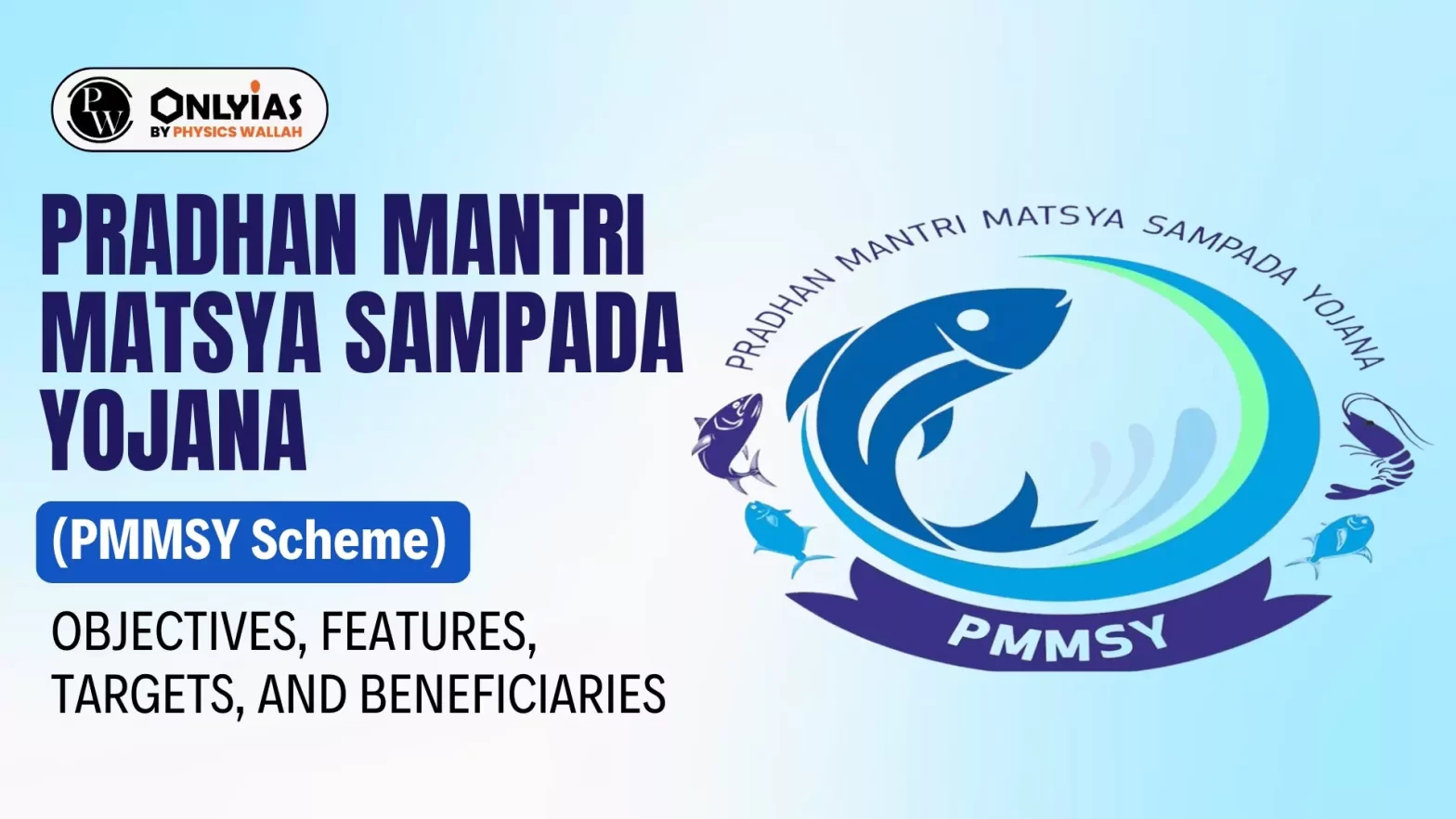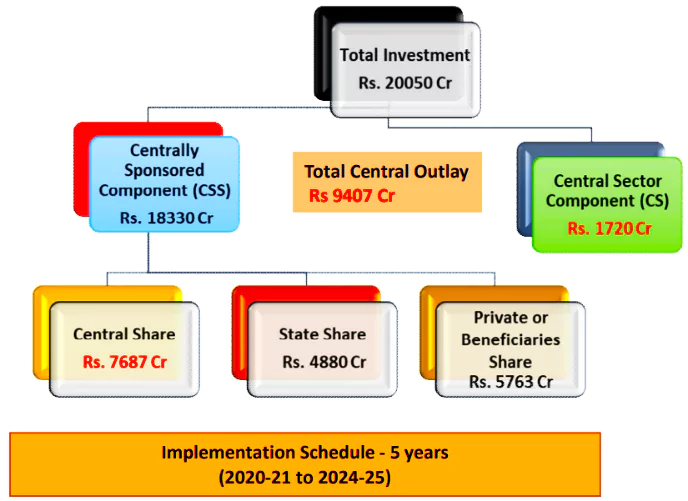The Indian government recently approved a Rs 6,000 crore sub-scheme under the flagship Pradhan Mantri Matsya Sampada Yojana (PMMSY) with the objective of formalising the largely unorganised fisheries sector in the country.

The Indian government recently approved a Rs 6,000 crore sub-scheme under the flagship Pradhan Mantri Matsya Sampada Yojana (PMMSY) with the objective of formalising the largely unorganised fisheries sector in the country.
 Harness the potential of the fisheries sector in a sustainable, responsible, inclusive, and equitable manner.
Harness the potential of the fisheries sector in a sustainable, responsible, inclusive, and equitable manner.| Central Sector Scheme (CS) | Centrally Sponsored Scheme (CSS) | |
|
Non-beneficiary oriented sub-components are shared between Centre and State/UTs:
|
Beneficiary oriented sub-components have combined financial assistance from Centre and State/UTs:
|
The PMMSY would be implemented through the following agencies:
The intended beneficiaries under the Pradhan Mantri Matsya Sampada Yojana are:
| Must Read | |
| NCERT Notes For UPSC | UPSC Daily Current Affairs |
| UPSC Blogs | UPSC Daily Editorials |
| Daily Current Affairs Quiz | Daily Main Answer Writing |
| UPSC Mains Previous Year Papers | UPSC Test Series 2024 |
PMMSY is a scheme launched in 2020 by the Department of Fisheries, Ministry of Fisheries, Animal Husbandry, and Dairying, aimed at promoting sustainable and inclusive development of the fisheries sector in India.
PMMSY is essential to harness the potential of the fisheries sector, increase fish production, enhance economic value addition, generate employment, and ensure the social and economic security of fishers and fish farmers.
PMMSY aims to increase fish production and productivity, modernize the value chain, double fishers' and fish farmers' incomes, boost the contribution of the fisheries sector to the economy, and ensure overall development of the sector.
PMMSY consists of two components: the Central Sector Scheme (CS) and the Centrally Sponsored Scheme (CSS), with the CSS further divided into non-beneficiary-oriented and beneficiary-oriented activities.
The scheme has an estimated investment of Rs. 20,050 crores, with a central share of Rs. 9,407 crores, state share of Rs. 4,880 crores, and beneficiaries' contribution of Rs. 5,763 crores.
<div class="new-fform">
</div>
